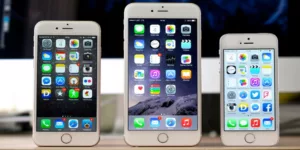Used iPhone prices are going down again thanks to the introduction of the iPhone XS and iPhone XS Max – the latest and greatest model. Owners of previous models are offloading their older phones for these newer models, and this is good for the used phone market.
Prices will often be lower, especially for the iPhone 8 and X (original model).
You can purchase a phone from a friend or family member, and this will allow you to test the phone and make a trusted purchase. But if you don’t want to use these two outlets, there are plenty more to choose from.
A few sources for used phones that are often great quality are:
These are three of the most popular used phone sellers. But there’s also the risk of receiving a phone that’s a dud.
Luckily, you’ll have a few things that you can inspect to make sure that your purchase is 100% legitimate and won’t have any issues in the future. Swappa and eBay both have return policies, but you’ll need to be more careful with Facebook’s Marketplace – you may get a dud.
1. Check the Model Number
You can easily tell one iPhone model from the next, but there is more of a reason to know your iPhone’s model number than just this: compatibility. You need a phone that is compatible with your cell phone service provider.
Let’s assume that you purchased an older iPhone 6S model.
Well, the A1633 is better for AT&T, and the A1634 is the better option for the 6S Plus. But if you’re on another carrier, you’ll want the A1688 or A1687.
Check to make sure that the phone you choose is compatible with your carrier.
Knowing the model number will allow you to do some research and determine the possible compatibility of the phone.
You’ll also want to check the IMEI number, which the three main carriers will allow you to verify on their website:
- AT&T
- T-Mobile
- Verizon
Once you’re sure that the phone can be used and activated, it’s time to do a thorough quality control check.
2. Conduct Your Own Quality Control Check
Quality control checks are why a lot of people go with certified pre-owned products – everything is already verified for you. But when you purchase from another person directly, you’ll need to do your own quality control.
Glance over the screen and make sure that there is no excess wear and tear, such as a shattered screen or lines across the screen.
Screens may also look like they’re in great condition, but that doesn’t mean that there aren’t dead areas on the screen. I had an iPhone 6S that I dropped, and while the screen looked 100% perfect, the bottom portion of the touch screen was damaged.
I couldn’t even hit the “send” button.
So, you’ll want to check all portions of the screen to make sure that the touchscreen is still working properly.
Inspect:
- Camera
- Video
- Buttons
- Headphone jack
- Charging
- Speakers
- GPS
If the phone is newer, you’ll also want to see if the one-year warranty is still valid.
3. Check the Unit for Water Damage
iPhone models do have their own water contact indicator, and this alerts you to whether or not the phone has been water damaged. You’ll need to remove the SIM card and then shine a light into the slot where the SIM card was located.
If you see a red water indicator, liquid came in contact with the SIM tray.
This is a good indicator that the phone may be damaged even if it seems to work properly. Unfortunately, water damage is not covered under warranty, so you’ll have no means of recourse to have the phone fixed aside from paying for repairs out-of-pocket.
Sometimes, if this has happened to you, it’s possible to stick the phone in a bag of rice, allowing it to dry for a day or two before turning the phone back on.
Once everything checks out, it’s time to set your phone up.
If you’ve forgotten how to get into your iCloud account, you’ll need to either keep guessing the password or use an unlocker service. If this is your first iPhone, the process will be very quick to set everything up.
Once setup is complete, try out your phone, making sure all of your favorite features and apps work properly.








